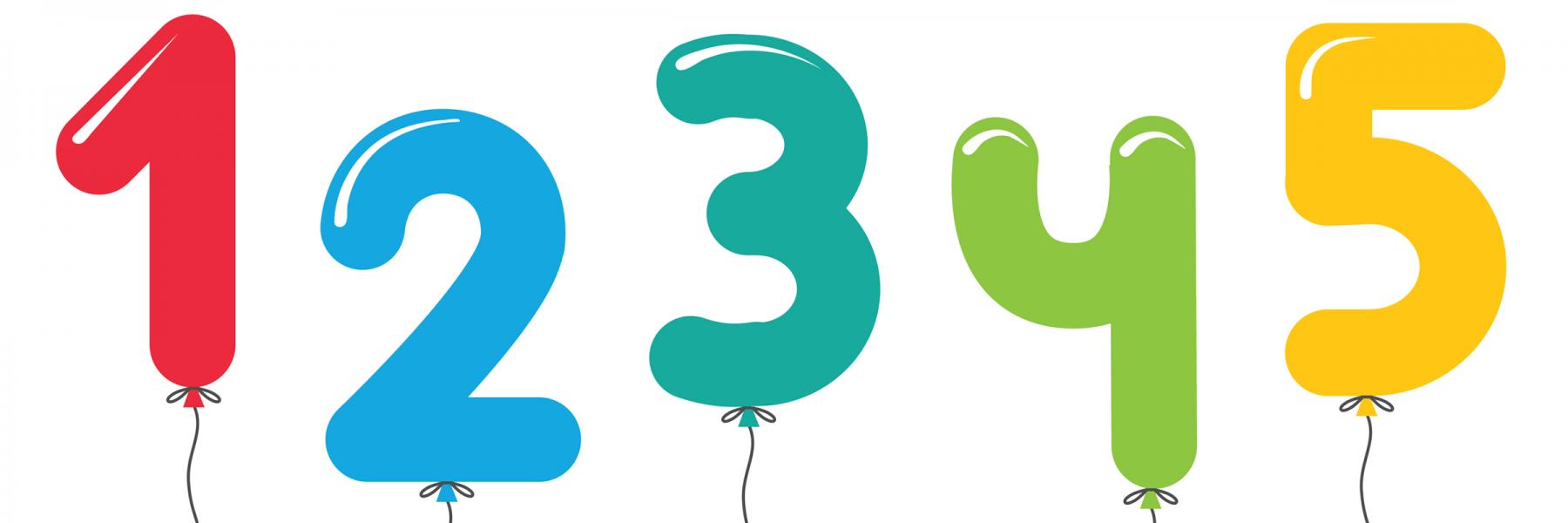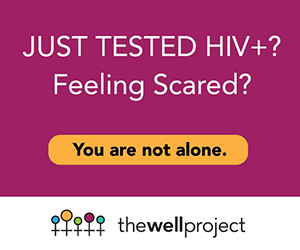
July 17, 2023 – Positively Aware.
by Olivia G. Ford
Infant-feeding for parents living with HIV in the U.S. has improved tremendously with updated federal guidance that now affirms informed, shared decision-making.
In late January, a panel of experts in perinatal HIV treatment, care and prevention, in consultation with community advocates and pediatric experts, revised the "Recommendations for the Use of Antiretroviral Drugs During Pregnancy and Interventions to Reduce Perinatal HIV Transmission in the United States"—often known as the Perinatal HIV Clinical Guidelines—issued by the U.S. Department of Health and Human Services (DHHS). The update reflects what has already been the standard of perinatal HIV care for most of the world: Breast/chestfeeding can be a safe, healthy option for virally suppressed parents with HIV and their babies. Further, there are infant-feeding considerations beyond the (low) possibility of HIV transmission.
National medical associations such as the American Academy of Pediatrics are expected to make similar updates, and the U.S. Centers for Disease Control and Prevention (CDC) has committed to referring to these guidelines rather than maintaining separate recommendations.
Here are five key entry points about infant-feeding and the updated Perinatal HIV Clinical Guidelines.
1. The chance of breast milk HIV transmission from a parent taking HIV treatment is very low.
The updated guidelines clarify what we have learned from studies in resource-limited regions: effective HIV treatment and undetectable viral load for lactating parents drives babies' likelihood of acquiring HIV during breast/chestfeeding below 1%.
In recent years, guidelines in high-resource countries like the U.S. have included language around supporting parents who choose to breastfeed "despite" recommendations against this practice. The current guidelines include no such discouragement. They explain that formula feeding eliminates any possibility of HIV transmission, and that a less than 1% chance is not zero. It is worth noting that the likelihood of transmission through pregnancy and birth is also considered to be less than 1%, though technically not zero. Since that initial triumph of treatment as prevention beginning in the 1990s, it has been increasingly well known that with access to prenatal care and HIV medication, babies are born without HIV. Infant HIV acquisition usually signals lack of access to this care.
Does this mean U=U for breast/chestfeeding? Presently, no. We have piles of studies showing unequivocally that there is zero chance of acquiring HIV sexually from a person whose viral load is undetectable. That is not yet the case here—but the pool of data may yet grow and further demonstrate that, with these conditions in place, undetectable does indeed equal untransmittable during breast/chestfeeding.
2. Breastfeeding has benefits for infants and parents.
Clear, copious evidence indicates that breastfeeding—the preferred infant feeding method of the human species—is also the healthiest option for babies and parents who are able to do so. Health benefits highlighted in the newest version of the guidelines, citing CDC literature, include lower rates of sudden infant death syndrome, asthma, obesity, and type 1 diabetes for breastfed infants. Further, breast/chestfeeding parents experience lower rates of hypertension, type 2 diabetes, and several reproductive cancers—in addition to important cultural, emotional, cost-saving, and convenience benefits of feeding one's child from their body.
"I was entirely surprised when I learned the benefits of breastfeeding, including the bonding that happens during this time between mother and child," said Ciarra "Ci Ci" Covin, program manager at The Well Project and an advocate who advised on the guidelines updates, in a recent email conversation.
Like HIV, the aforementioned health conditions disproportionately affect Black parents and babies. Meanwhile, CDC has reported that hospitals serving Black birthing parents are less likely to offer evidence-based maternity care, including encouraging breastfeeding in the crucial first hour of life—and not offering formula unless medically indicated. This is one of many ways systemic racism thwarts Black women's breastfeeding potential—and a key reason behind lower breastfeeding rates among Black parents than any other racial group in the U.S.
In the midst of a maternal and infant mortality crisis in which Black and also indigenous birthing parents and infants are far more likely to die from conditions related to giving birth—or being born—than their White counterparts, this is arguably the community that could benefit from breastfeeding support the most. As the updated guidelines indicate, this context of inequity must be considered as part of counseling and supporting birthing parents with HIV—a high percentage of whom will likely be Black women.
"One thing that really resonated with me while I fed my child from my body, is that I was able to feed my child in the way my ancestors fed theirs," said Covin.
3. Providers should discuss a range of options with parents and support them in their decision.
Covin has given birth to two HIV-negative children while living with HIV, the second of whom she breastfed. "We do not need approval; we need support" around infant feeding options, she said. While shared decision-making is an important framework, central to the updated guidelines, ultimately how a parent feeds their baby is their decision. A provider who supports that approach is supporting parents' agency as well as their health.
It's important to note that the guidelines updates are not about getting everyone to breast/chestfeed, but providing information and resources to enable parents to make the best decision for themselves and their families. The updated guidelines advise providers to start infant feeding conversations with a question such as: "Have you thought about how you would like to feed your baby?", and then outline methods of doing so. Offering this information sets a tone of trust in a parent's ability to make an informed decision.
If a parent chooses to formula feed, then support includes ensuring they have access to safe water to mix it (not a given even in the U.S., in this era of water crises in Michigan, Mississippi and elsewhere) and can afford to buy or otherwise access sufficient formula. Screened, pasteurized donor human milk, offered through milk banks with a provider's prescription, may be an intriguing option for some but may not be accessible due to cost, supply or other factors.
Whether breast/chestfeeding or not, a parent's adherence to HIV meds is vital after giving birth to preserve their own health and, if breast/chestfeeding, to prevent infant HIV acquisition. Support is essential to adhere to anything during the often confusing, exhausting, sticky, messy, blissful, lonely postpartum period.
Providers may ensure a new parent has the clinical, mental health and support engagement needed to maintain their HIV med regimen—as well as people caring for them as they transition into this new phase of life. And like so many other social benefits, the U.S.'s virtually nonexistent postpartum infrastructure (no guaranteed paid parental leave, paltry clinical follow-up, poor access to lactation support, etc.) stands in stark contrast to comparable nations. Even the American College of Obstetricians and Gynecologists has declared the need to strengthen postpartum care. We must do better, for all parents of any HIV status.
4. Calling Child Protective Services does harm—and no good
The child-welfare system in the U.S., put plainly by renowned legal scholar and reproductive justice pioneer Dorothy Roberts in Time magazine last year, is "designed to deal with the hardships of children who are disadvantaged by structural inequality—including structural racism—by accusing their parents and separating families." This is the system that healthcare providers are engaging when they call Child Protective Services (CPS; the agency name varies from state to state) in response to a parent's interest in feeding their child from their body. Yet numerous anecdotal reports from parents with HIV reveal providers threatening or actually making such calls when they expressed a desire to breast/chestfeed. Such threats may deter breast/chestfeeding through fear; they can also drive people to breast/chestfeed in secret, without clinical support.
The new guidelines update specifically warns against making such calls, pointing out that they "exacerbate the stigma and discrimination experienced among people with HIV; and are disproportionately applied to minoritized individuals, including Black, Indigenous, and other people of color."
Reports indicate that a CPS paper trail, even from unsubstantiated calls, can cause ongoing harm to families. Further, we know from years of advocacy and inquiry around HIV criminalization that legal punishment has no place in health promotion.
"While one may not always agree with the choices of the other," Covin said, "it is important that biases do not get in the way of engaging a parent in treatment and support that may be life changing."
5. There is more to learn—and improved chances to find out.
Findings from large studies in resource-limited regions is strong. Still, many years of formal prohibition against breastfeeding while living with HIV in high-resource regions have, predictably, hampered U.S.-based research in this arena. The current guidelines are "partly based in evidence, and partly in identifying what we don't know yet," stated expert panel member Judy Levison, MD, MPH, at a recent workshop.
Levison, an HIV-expert OB/GYN at Baylor College of Medicine whose clinic has done groundbreaking work around perinatal peer support and breast/chestfeeding with parents living with HIV, has presented frequently on the timeline of research and guidelines around breast/chestfeeding and HIV. She often ends these presentations with examples of unanswered questions, such as: What is the level and role of parents' HIV meds in breast milk? How long must a person have an undetectable viral load before breast/chestfeeding is considered "safe"? What is the role of preventive regimens for infants when the breastfeeding parent's viral load is undetectable? How often should breastfeeding parents' viral loads be measured? The list ends with an ask to listeners: What do you want to know? With the support of federal guidance, the field for exploration by researchers, providers and parents is now wider.
Call the National Perinatal HIV Hotline to reach national perinatal HIV experts, 24 hours a day, seven days a week: 888-448-8765.




